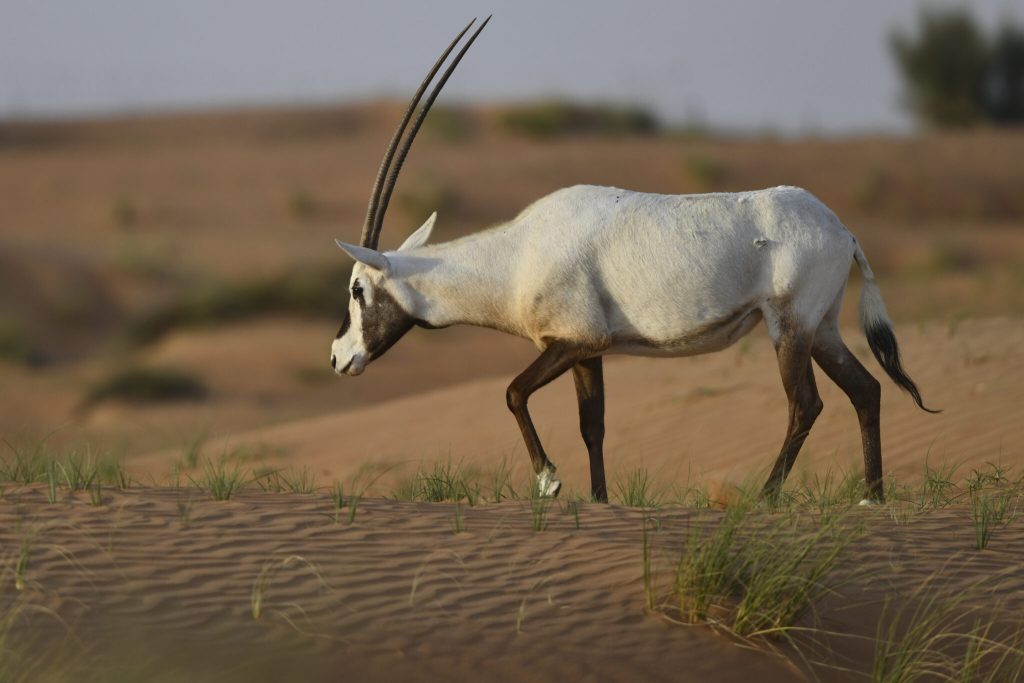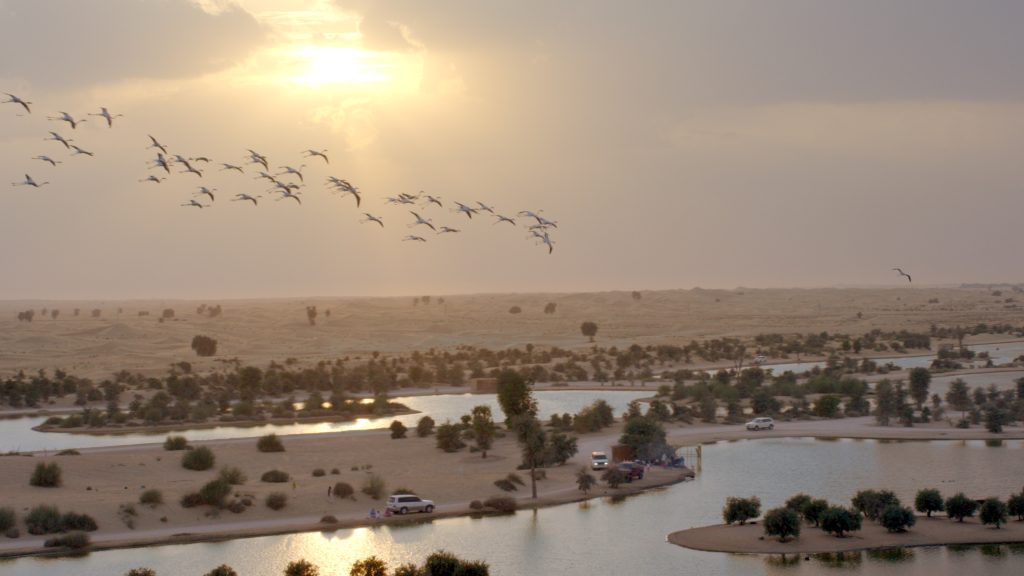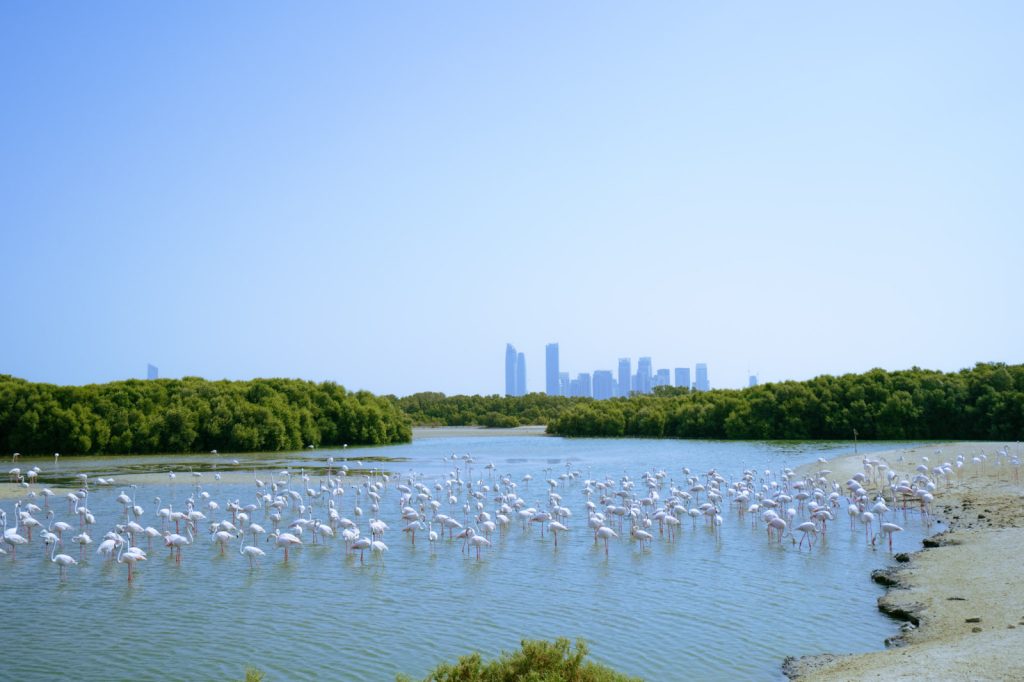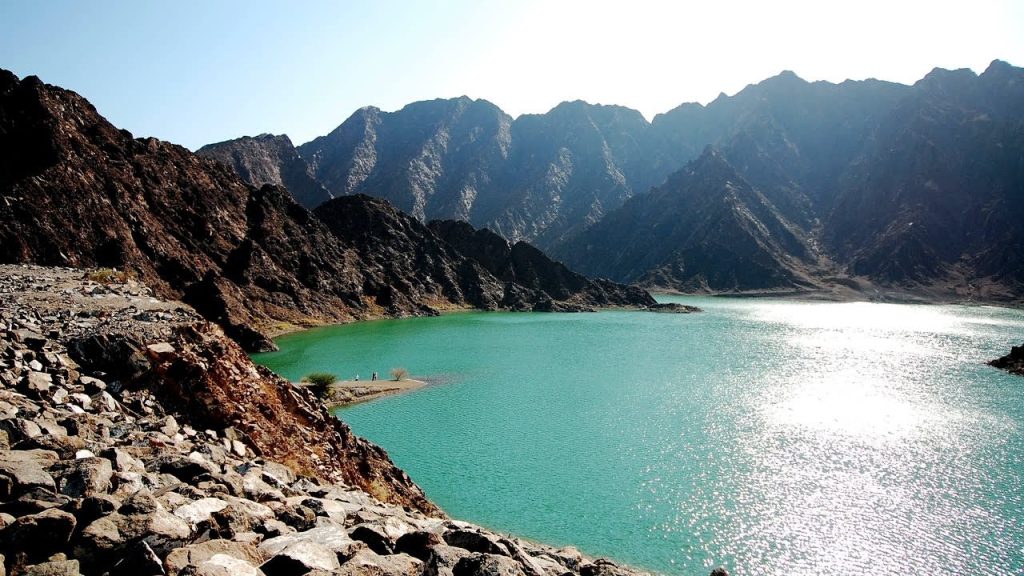Beyond the shimmering skyline and sprawling deserts of the UAE, a quieter world exists, waiting to be explored. Scattered across the region, the best wildlife reserves to explore near Dubai reveal a side of nature that many overlook, where survival unfolds in its rawest form. Notwithstanding the city’s rapid expansion, these sanctuaries—whether in wetlands, mountains, or rolling dunes—harbor creatures that have adapted to the land’s extremes. Elsewhere, between craggy peaks and shifting sands, life moves at its own pace, dictated by rhythms far older than civilization. Sooner or later, every traveler seeking more than luxury and innovation stumbles upon these places, where nature, untamed and unfiltered, continues its quiet reign.
DUBAI DESERT CONSERVATION RESERVE
Established in 2003, the Dubai Desert Conservation Reserve (DDCR) covers 225 square kilometers, nearly 5% of Dubai’s land. This vast desert sanctuary protects the Arabian Oryx, once on the brink of extinction. Conservation efforts have helped it host the largest free-roaming Oryx herd in the UAE. The reserve also shelters Arabian gazelles, sand gazelles, reptiles, birds, and diverse native flora.
Its landscapes range from shifting dunes to rocky plains, supporting a rich and fragile ecosystem. To balance conservation and tourism, visitors can experience falconry, camel trekking, and guided nature walks. These activities allow exploration while preserving the reserve’s delicate environment. By maintaining this balance, the DDCR ensures sustainable tourism without harming its wildlife.
More than just a protected area, the DDCR is an active research hub, collaborating with scientists to monitor and sustain its biodiversity. As a member of the International Union for Conservation of Nature (IUCN), it adheres to international conservation standards, setting a precedent for arid land preservation. Additionally, the reserve prioritizes rewilding efforts, ensuring indigenous species not only survive but flourish in their natural habitat. Sustainable tourism initiatives also play a key role, allowing guests to witness the desert’s wonders without harming its fragile ecosystem. Through these initiatives, the DDCR has become a model for responsible environmental stewardship, influencing similar projects worldwide.
The success of the DDCR underscores the possibility of coexistence between conservation and development. By safeguarding this untouched landscape, Dubai is preserving a crucial part of its natural heritage for future generations. Visitors, too, contribute to this mission, supporting ongoing conservation work simply by experiencing the desert’s timeless majesty. As research continues and strategies evolve, the DDCR remains a beacon of hope for desert conservation, proving that even in extreme environments, life can thrive with the right commitment and care.

AL MARMOOM DESERT CONSERVATION RESERVE
Spanning nearly 10% of Dubai’s land area, Al Marmoom Desert Conservation Reserve is the UAE’s first unfenced nature reserve, allowing wildlife to move freely. The Al Qudra Lakes, though man-made, have become a critical sanctuary for migratory birds, including flamingos and rare species like the Egyptian Nightjar. The reserve hosts 26 reptile species, nine mammal species, and 39 plant species, supporting 19 endangered animals. Beyond its biodiversity, Al Marmoom is home to the Saruq Al Hadid archaeological site, offering a glimpse into the region’s Iron Age history. Visitors can enjoy birdwatching, cycling along an 84 km track, and stargazing, benefiting from the desert’s clear skies and minimal light pollution.
Managed by Dubai Municipality, the reserve prioritizes sustainable ecotourism and conservation. The upcoming Marmoom Biosphere Centre will further research efforts, ensuring long-term environmental protection. Meanwhile, conservation initiatives, such as bird breeding programs and habitat restoration projects, reinforce its commitment to biodiversity. Regulations are in place to minimize human impact, striking a balance between recreation and preservation. Additionally, the reserve plans to introduce an outdoor solar-powered theatre, blending sustainability with cultural engagement. Through education programs, visitors gain deeper insight into the importance of desert conservation, fostering responsible exploration.
Al Marmoom represents Dubai’s dedication to protecting its natural landscapes, proving that wildlife conservation and sustainable tourism can coexist. Its vast expanse offers both a refuge for endangered species and a tranquil retreat for nature lovers. Visitors contribute to preservation simply by respecting the delicate ecosystem. As the reserve grows, it continues to serve as a model for conservation in arid environments, showcasing the power of responsible environmental stewardship.

RAS AL KHOR WILDLIFE SANCTUARY
Not far from the steel and glass towers, an unassuming sanctuary thrives, where the city’s relentless noise fades into the rustling of reeds. Here, the air hums with the calls of over 450 species, their voices layered like an untamed symphony. Flamingos, their slender forms stark against the skyline, wade through the shallows, painting the water with pink reflections. Despite the proximity to urban sprawl, the sanctuary holds firm, a wetland resisting the desert’s creeping reach.
Each season, the tides dictate movement—birds arrive, nest, depart, and return, tethered to an invisible rhythm. Moreover, the mudflats, lagoons, and mangroves cradle a fragile equilibrium, where crustaceans burrow, fish dart, and migratory birds find respite. Raptors circle high, their sharp eyes tracing unseen pathways between sky and earth. Even so, beneath the water’s surface, life teems—hidden, silent, essential.
Although it is a refuge, the sanctuary is not untouched by threats. Expanding development looms, pressing ever closer, challenging the delicate balance between preservation and progress. However, conservation efforts persist, ensuring the ecosystem remains intact for those who rely on its sanctuary. Observation decks, discreetly placed, allow visitors a glimpse into this secretive world, yet the wildlife remains undisturbed.
At dusk, golden light washes over the water, silhouettes stretching long across the rippling surface. Soon, the night creatures emerge—silent, unassuming, yet essential to the cycle. Despite everything, the sanctuary endures, an anomaly in a city defined by rapid transformation. The birds will return, their wings tracing paths older than civilization itself. In the end, Ras Al Khor remains a whisper of the past, an echo of the wild in a place constantly rewriting itself.

HATTA MOUNTAIN CONSERVATION AREA
Jagged peaks rise against the horizon, their weathered forms standing defiant in the face of time. Hatta, an untamed realm of craggy ridges and deep valleys, holds secrets that stretch far beyond its rugged terrain. Unlike the endless dunes that dominate the UAE, this is a place shaped by stone and water—a contradiction within a land of extremes. Even as modern roads wind their way toward its heart, the mountains remain indifferent to human ambition.
Between towering cliffs, narrow trails carve paths known only to those who dare to venture beyond the familiar. Although the silence here is almost absolute, it is not empty—winds whisper through the canyons, carrying stories buried beneath centuries of erosion. Goats navigate the steep slopes effortlessly, their movements precise, dictated by instincts honed over generations. Meanwhile, beneath the sun-scorched rock, hidden streams carve out emerald pools, their cool depths offering refuge to both man and beast.
Still, the mountains demand respect. Temperatures swing wildly, and the terrain refuses to yield to those unprepared. Yet, for those who listen, Hatta reveals itself in layers—the scent of acacia in the morning air, the distant sound of water trickling through dry riverbeds, the sudden flash of a falcon soaring overhead. While the world beyond expands, this place remains unchanging, a bastion against the erosion of time.
At twilight, the peaks burn in the fading sunlight, their silhouettes stark against the vast desert beyond. Eventually, darkness blankets the valleys, and the stars return, uninterrupted, undiminished. Here, under an ancient sky, the wilderness endures—not as something lost, but as something never conquered. Hatta is not merely a destination; it is a challenge, a story written in stone, waiting for those who dare to read it.



 then "Add to Home Screen"
then "Add to Home Screen"